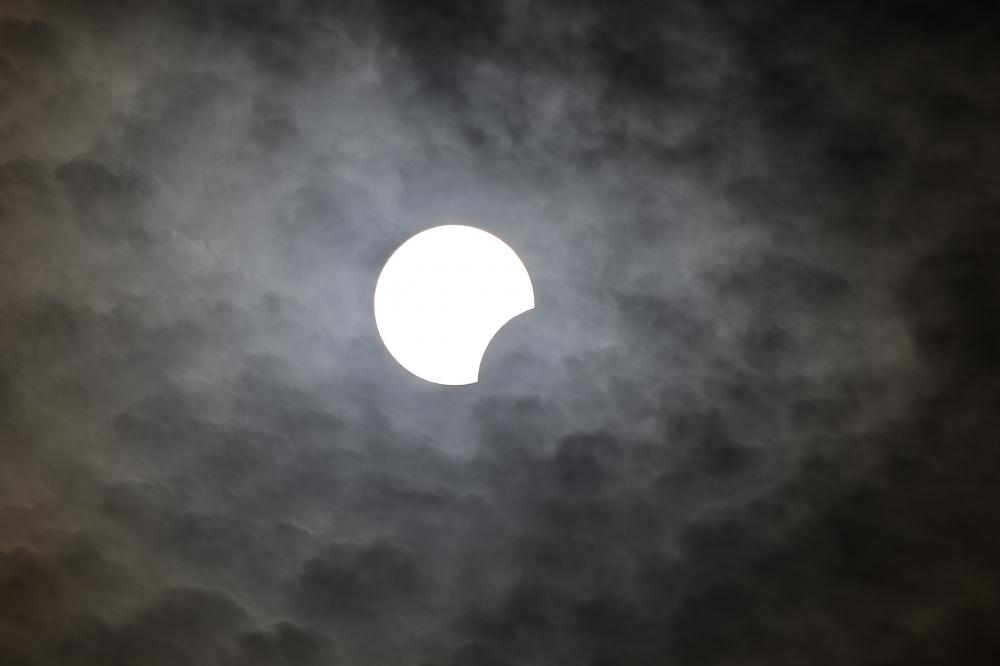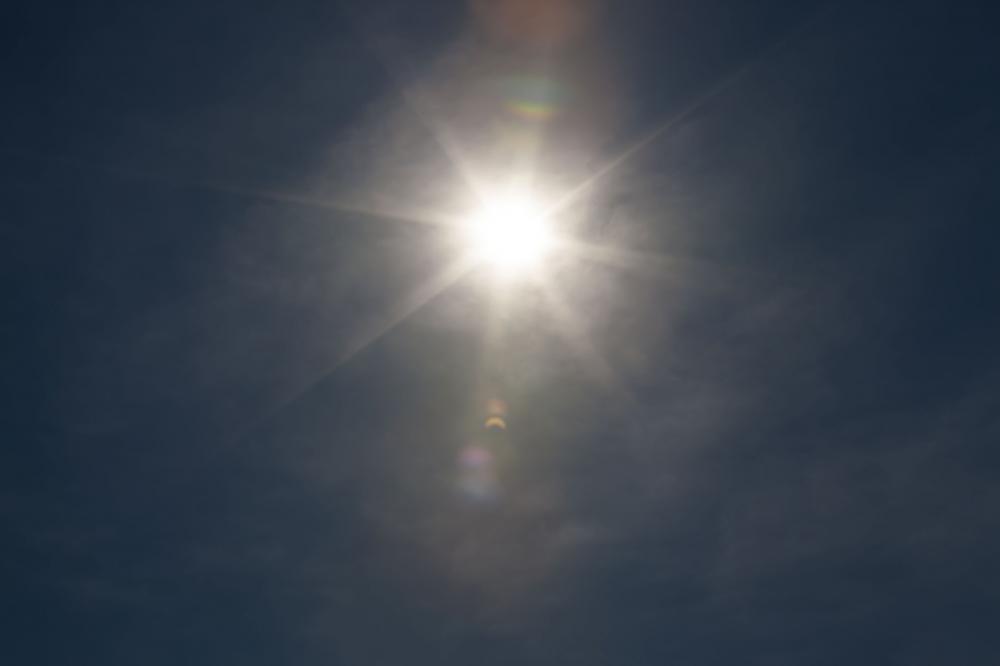
Understanding Eclipse Blindness
When the celestial dance between the sun and the moon culminates in a solar eclipse, the spectacle draws gazes from around the globe. However, the magnificence of this astronomical event comes with a dire warning: the risk of blinded by eclipse. This condition, also known as solar retinopathy, occurs when the retina, a delicate part of the eye responsible for vision, suffers damage due to direct sunlight exposure. The allure of an eclipse can tempt many to overlook safety measures, leading to irreversible eye damage.
Risks of Inadequate Protection
The key to safely enjoying an eclipse lies in the usage of specially designed solar eclipse glasses that meet the ISO 12312-2 international safety standard. Regular sunglasses, no matter how dark, do not offer protection against the intense solar rays. The market, unfortunately, is rife with counterfeit glasses that fail to protect adequately, posing a significant risk to unsuspecting users.
Symptoms of Solar Retinopathy
Identifying the onset of blinded by eclipse is crucial for seeking immediate medical assistance. Symptoms may not be apparent right away and can include blurred vision, a blind spot in the center of the visual field, distortion of shapes, heightened light sensitivity, and altered color vision. These signs can manifest hours or even days after the exposure, making vigilance essential following an eclipse viewing.
Personal Experience
I once met someone who shared their story of being blinded by eclipse during the significant 2017 event. Despite previous warnings, they used a pair of sunglasses believing them to be safe. The subsequent vision problems – a central blind spot and distorted vision – were immediate red flags. This anecdote illustrates the profound personal impact and the importance of adhering to safety protocols during such events.
Protective Measures
Ensuring your solar eclipse glasses are legitimately ISO-certified is paramount. Look for the ISO 12312-2 code on the glasses, and purchase them from reputable vendors. If the glasses are scratched, torn, or damaged in any way, they must not be used. It’s also advisable to limit direct sun exposure, even with protective eyewear, to minimize risks.
Legal Recourse for Victims
Victims of blinded by eclipse due to defective or fake glasses have legal options. It’s crucial to document the incident thoroughly, including medical reports, purchase records of the glasses, and any other relevant evidence. A legal professional specializing in personal injury and product liability can provide guidance and support through the process of seeking compensation.
- Consult an ophthalmologist immediately for an eye examination.
- Preserve the glasses and any purchase documentation as evidence.
- Contact a specialized legal team experienced in product liability cases.
How We Can Help
Our organization is dedicated to supporting individuals affected by blinded by eclipse. Through advocacy and legal support, we aim to hold accountable those responsible for distributing unsafe eyewear. If you or someone you know has suffered eye damage as a result of inadequate protection during an eclipse, reaching out to our team can be the first step toward recovery and justice.
The phenomenon of being blinded by eclipse underscores the critical importance of proper eye protection during solar eclipses. By educating the public about the risks and advocating for safety standards, we can prevent these injuries. Remember, no celestial spectacle is worth sacrificing your vision. Protect your eyes, and enjoy the wonders of the cosmos safely.

How long does eclipse blindness last?
Well, let me tell you, the duration of eclipse blindness, or solar retinopathy, can vary from person to person. In some cases, the symptoms may be temporary, lasting from a few days to a few weeks. However, in more severe instances, the damage can be permanent. It’s important to understand that the retina’s healing process is quite complex. Some people might notice a gradual improvement in their vision over time, while for others, the damage could be irreversible. Remember, every eye is unique, and so is every case of eclipse blindness. If you’ve experienced any symptoms after viewing an eclipse, consulting with an ophthalmologist is critical to assess the extent of your eye damage and explore potential treatments.
Is eye damage from eclipse permanent?
This is a concern for many, and rightfully so. Depending on the severity of the exposure and the duration of direct sunlight contact, the damage can indeed be permanent. The retina does not have the ability to regenerate its cells. Once they’re damaged, they cannot be restored or replaced. This is why using protective eyewear that meets the ISO 12312-2 standard is non-negotiable during an eclipse. But don’t lose hope too quickly. Some people do experience partial recovery, where symptoms may lessen over time. It’s a stark reminder of how precious our vision is and the importance of protecting it at all costs.
What are the symptoms of eclipse blindness?
Recognizing the symptoms of eclipse blindness early is key. Common signs include blurred vision, a central blind spot in one or both eyes, distortion of shapes, heightened light sensitivity, and altered color vision. These symptoms could emerge within hours or even days after the exposure. Imagine waking up the next morning, expecting a normal day, only to find a persistent spot in your vision that won’t go away. It’s a scary thought, isn’t it? This underscores the critical importance of seeking immediate medical attention if you notice any of these symptoms following an eclipse. Early diagnosis can be crucial in managing the condition and preventing further damage.
Why does my eyes hurt after looking at the eclipse?
Looking at the sun during an eclipse without proper protection can cause what’s known as photokeratitis, akin to a sunburn but on your cornea, the eye’s surface. It’s not just the visible light but also the ultraviolet (UV) rays that can be harmful. Your eyes hurting after such an event is a signal from your body that damage has occurred, similar to how your skin would feel after getting sunburned. The pain, redness, or even temporary vision problems you’re experiencing are your eyes’ way of telling you that they’ve been exposed to something harmful. Always remember, it’s not just discomfort–it’s a warning.
Can children be more affected by eclipse blindness than adults?
There’s a common concern among parents about the vulnerability of children’s eyes to eclipse blindness. While it’s true that everyone’s eyes can be harmed by improper viewing of an eclipse, children may be at a slightly higher risk, not necessarily due to physiological differences but more because of their curiosity and lesser awareness about the potential dangers. They might look directly at the sun out of curiosity, not realizing the harm it can cause. This highlights the importance of educating not just adults but also children about the risks associated with direct sunlight exposure, especially during an eclipse, and ensuring they have proper eye protection.
How can one safely view an eclipse?
To safely view an eclipse, using ISO 12312-2 compliant solar eclipse glasses is absolutely essential. Unlike regular sunglasses, these are specially designed to filter out the harmful rays of the sun. Make sure to inspect your glasses before the eclipse for any scratches or damages, and instruct children on how to wear and keep them on. Additionally, setting up a pinhole projector is a fun and safe way to view eclipses indirectly. Remember, no indirect viewing method should replace proper eye protection for direct viewing. It’s all about combining safety with the incredible experience of witnessing this natural phenomenon. Curiosity drives us to witness these celestial events, but let’s ensure it’s coupled with caution to protect our precious vision.
Resources
- National Eye Institute (NEI) – The National Eye Institute provides information on eye health, including resources on protecting your eyes during events like solar eclipses.
- Centers for Disease Control and Prevention (CDC) – The CDC offers guidance on eye safety and protection, including information on solar retinopathy and how to prevent it.
- American Academy of Ophthalmology (AAO) – The AAO provides resources on eye care and safety, with information on solar eclipse viewing and protecting your vision.
- Prevent Blindness – Prevent Blindness is a non-profit organization dedicated to promoting eye health and safety, offering resources on protecting your eyes during celestial events.
San Antonio TX 78205